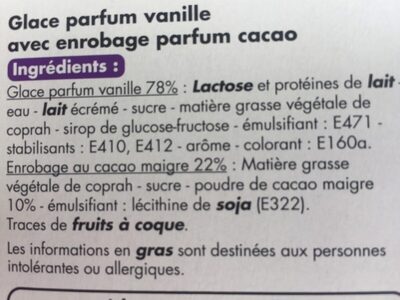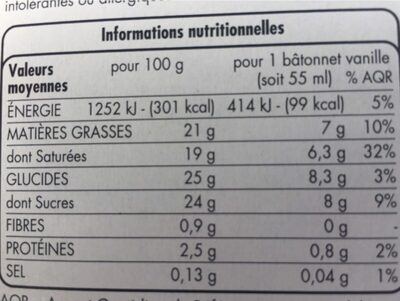Bâtonnets glacés - 8 parfum vanille 8 parfum chocolat - Tous les jours - 536 g
This product page is not complete. You can help to complete it by editing it and adding more data from the photos we have, or by taking more photos using the app for Android or iPhone/iPad. Thank you!
×
Some of the data for this product has been provided directly by the manufacturer casino.
Barcode: 3700311811216 (EAN / EAN-13)
Common name: Glace parfum vanille avec enrobage parfum cacao Glace parfum chocolat avec enrobage parfum cacao
Quantity: 536 g
Brands: Tous les jours
Countries where sold: France
Matching with your preferences
Environment
Packaging
Transportation
Other information
Other information: Conditionné par Ysco NV 8920 Langemark Belgique.
Conservation conditions: Plusieurs mois dans le compartiment à -18°C d'un congélateur dans la limite du délai optimal de conservation. Attention : Ne jamais recongeler un produit décongelé !
Recycling instructions - To recycle: Etui carton
Recycling instructions - To discard: Bâtonnet bois et emballage individuel plastique
Report a problem
Data sources
Product added on by kiliweb
Last edit of product page on by casino-off.
Product page also edited by autorotate-bot, casino, openfoodfacts-contributors, teolemon, yuka.WnFJNEVLNGx2TjRGdy8wUCtSSFAwWXBxK1krN1hVV29HZlFySVE9PQ.






